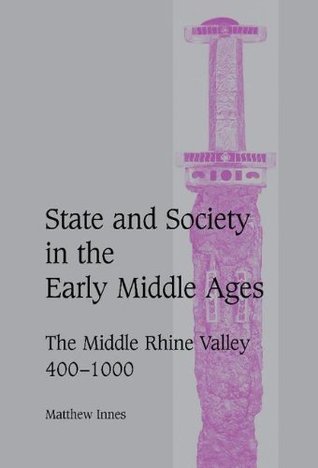Kindle Notes & Highlights
Read between
October 25 - October 31, 2023
The more we look at local leaders, the more it becomes clear that legalistic constitutional ideas about delegated rights of command simply do not explain the realities of power. In the localities, we meet forms of political leadership which were inherently personal, resting on one-to-one obligation and the recognition of transcendent moral qualities. Power, deeply unequal in its distribution within a profoundly hierarchical society, rested in reciprocity. It depended on informal channels of moral obligation and social pressure, not constitutional positions.25
Were political leaders more than particularly influential social actors, their power immersed in normal patterns of social action?
The intervening period cannot satisfactorily be reduced to either a hangover from antiquity or a melting-pot out of which high medieval society emerged. In both schemes there is more than a hint of the Dark Ages paradigm which has not quite been exorcised yet - for is not the characterisation of five centuries of gradual synthesis an effective writing off of any independent value to those centuries? Historical development cannot be seen as a simple progression from chaos to order, irrational to rational. Unless we recognise that the early middle ages have their own legitimacy as a historical
...more
What follows is divided into two parts. In the first, consisting of chapters 2-5, I adopt a broadly `horizontal' approach, focusing on the `source-rich' Carolingian period and analysing the fundamentals of social and political organisation. I begin by attempting to explain precisely why the Carolingian period is so well documented, examining the relationship between monasteries and lay society. I go on to examine the nature of landownership and the relationships between kinship, social status and the land; the texture of power, the places at which collective action took place, and the
...more
implications of those structures and their peculiarities.
The evidence which survives from the early medieval period is only a tiny subset of what once existed, but its survival is not necessarily random. Those documents which were transmitted were not just lucky enough to avoid the random variables of destruction and loss; most were copied b...
This highlight has been truncated due to consecutive passage length restrictions.
In the Carolingian middle Rhine, documents were copied in large numbers because they recorded an important process of social change, which saw monasteries ac...
This highlight has been truncated due to consecutive passage length restrictions.
The surviving documents tell us about pious gifts to the church, and a little about later challenges to these transactions, but stand in an uncertain relationship to the wider field of social intercourse.
The best starting-point for any study of gifts of land to the church in the middle Rhine is the foundation of the abbey of Lorsch by the powerful landowner Cancor and his widowed mother Willeswind in 764, on their portions of an important family centre. 16 Cancor and Willeswind gave their abbey to their kinsman Chrodegang, bishop of Metz, monastic reformer, papal legate in Francia and the driving force behind the reform of the Frankish church. 17 Lorsch was staffed with monks from Chrodegang's foundation at Gorze, led by Guntland, Chrodegang's brother, who became abbot. A stress on
...more
Roman saint brought to the middle Rhine by Chrodegang and Cancor, donors were buying into a network of spiritual patronage: in one donation charter a benefactor refers to `my peculiar patron, St Nazarius'.20 Concerns about prestige and local position informed the early waves of donations.
...more
Giving to the new foundation not only expressed and confirmed social status, it also claimed a link with the wider political world via Cancor and Chrodegang. (See fig. 3, overleaf


